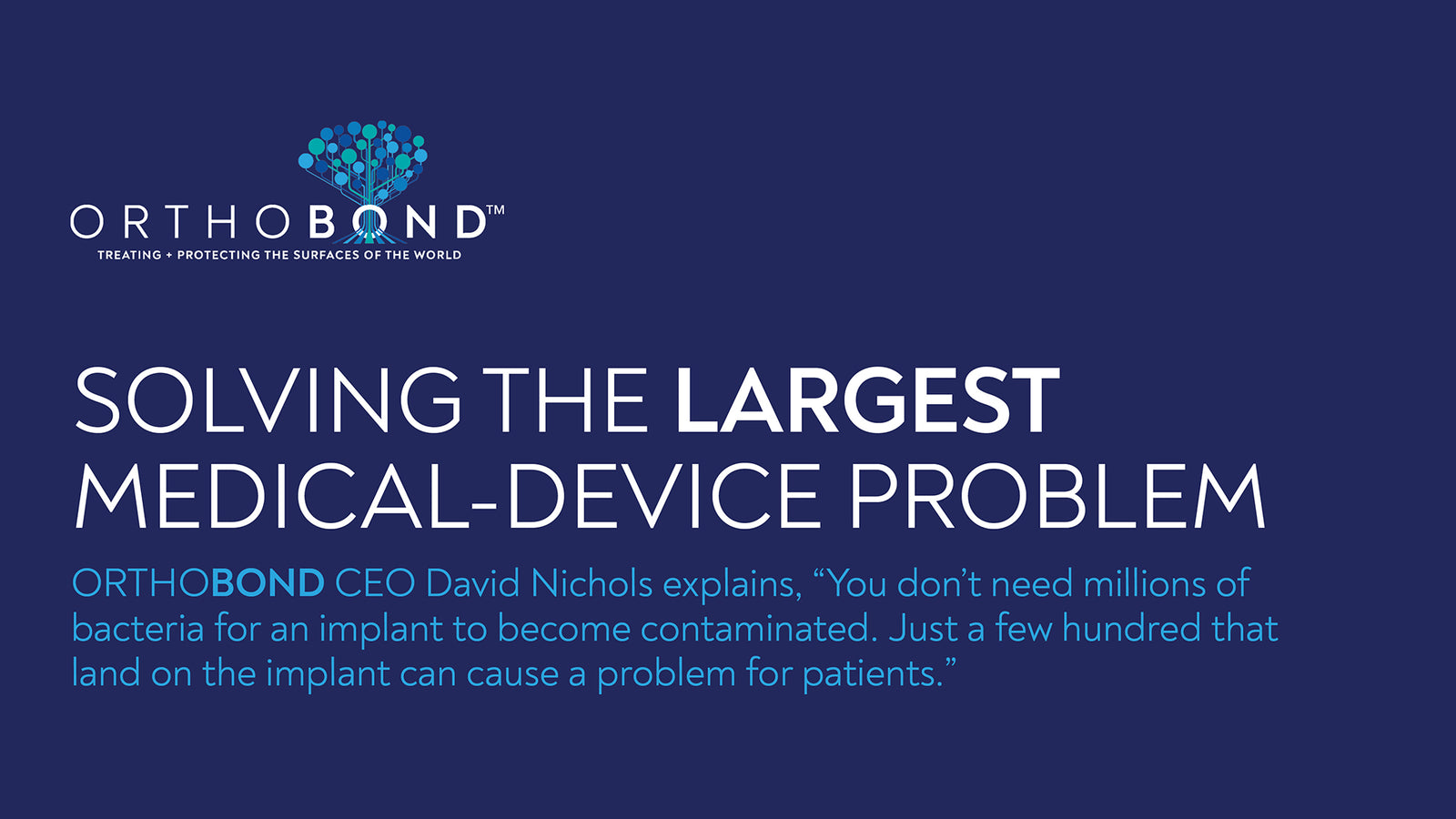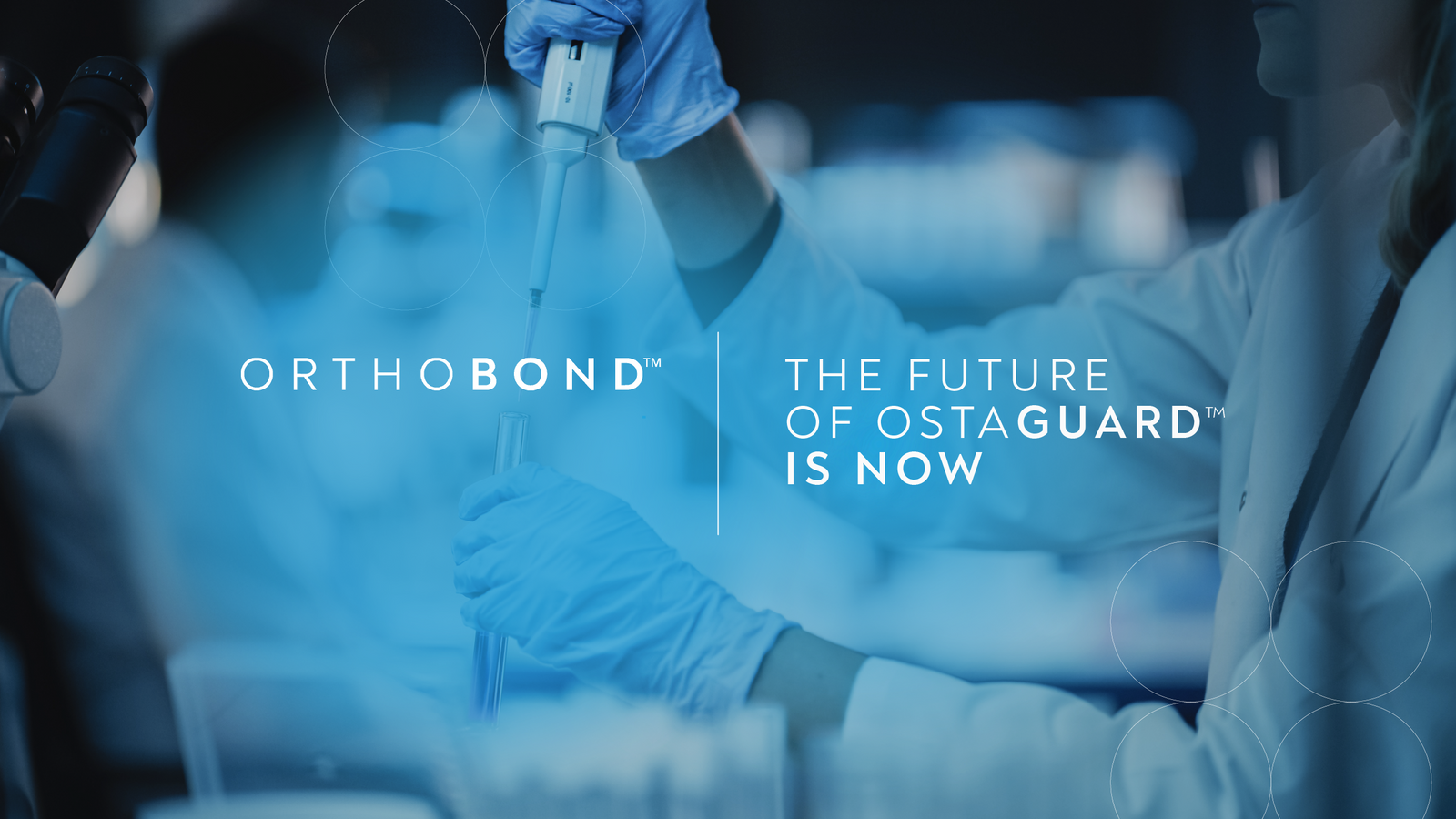
There’s no question that device contamination and failure can lead to a host of health complications for the patient, as well as the potential need for additional surgery and financial expenditure. In fact, implant-related infections, implant failure and revisional cost patients $8.6 billion every year.[1]
Unfortunately, numerous studies have shown that between 70-100% of explanted hardware from failed joint implants have some level of contamination and nearly half of post-surgical infections are attributed to implanted medical devices.[2] Studies have also shown that the longer surgical instruments or implants are exposed to the air in the operating room, the greater the likelihood of contamination that can lead to surgical site infection.[3]
Research has revealed that most device contamination occurs during surgery, primarily through aerosol particles, contamination from surgical gloves, and contact with the patient’s skin. Orthobond CEO David Nichols explains, “You don’t need millions of bacteria for an implant to become contaminated. Just a few hundred that land on the implant can cause a problem for patients.”
Despite efforts such as air filtration, thorough cleansing and PPE that are used to minimize contamination of the surgical field (which includes the implant), it’s impossible to eliminate all bacteria.
The past few decades have seen enormous innovation and improvement in the medical field, from materials and instrument design to robotic-assisted surgery. While solving the problem of device contamination has eluded researchers and manufacturers, Orthobond decided to take a novel approach by concentrating on the surface of the implant itself.
Orthobond is laser-focused on the problem of implant contamination, and the company has spent the last 14 years and invested $47 million to create a solution. According to Nichols, “The unmet need is in the operating room, because implants are no longer protected from contamination once the sterile packaging is opened.”
Ostaguard™ is a first-of-its-kind antibacterial surface coating—as well as the first-of-its-kind to be granted De Novo classification by the FDA with an initial application in the field of orthopedic spinal implants. After being tested on numerous surfaces against 12 microbes that represent nearly all cases of device-related infections, Ostaguard was shown to be 99.99% effective in killing multiple strains of bacteria that could come in contact with an implant in the operating room. An FDA-cleared permanent spinal implant with Ostaguard technology safely and effectively kills bacteria by mechanically rupturing pathogens—and without the use of antibiotics.
With Ostaguard technology, device manufacturers play a key role in enhancing patient safety and reducing device failure caused by contamination—without the need to alter the design of existing devices. Beyond our development expertise for applying Ostaguard to a new device, Orthobond’s regulatory and compliance experts manage the path to FDA clearance or approval. Our experts ensure that product technology is accurately represented by claim language to create a predictable regulatory pathway. We have also developed proprietary regulatory management, guidelines, protocols, and testing controls that consistently meet required benchmarks to help Ostaguard-coated products move swiftly along the approval path.
Contact Orthobond today to learn how Ostaguard can give your implantable devices an antibacterial advantage—and make you among the first to help save thousands of lives every year by minimizing implant contamination.
[1] Xi, W., Hegde, V., Zoller, S.D. et al. Point-of-care antimicrobial coating protects orthopaedic implants from bacterial challenge. Nat Commun 12, 5473 (2021).https://doi.org/10.1038/s41467-021-25383-z
[2] Darouiche, Rabih O. "Treatment of infections associated with surgical implants." New England Journal of Medicine 350.14 (2004): 1422-1429.
[3] Dalstrom DJ, Venkatarayappa I, Manternach AL, Palcic MS, Heyse BA, Prayson MJ. Time-dependent contamination of opened sterile operating-room trays. J Bone Joint Surg Am. 2008 May;90(5):1022-5. doi: 10.2106/JBJS.G.00689. PMID: 18451394.



